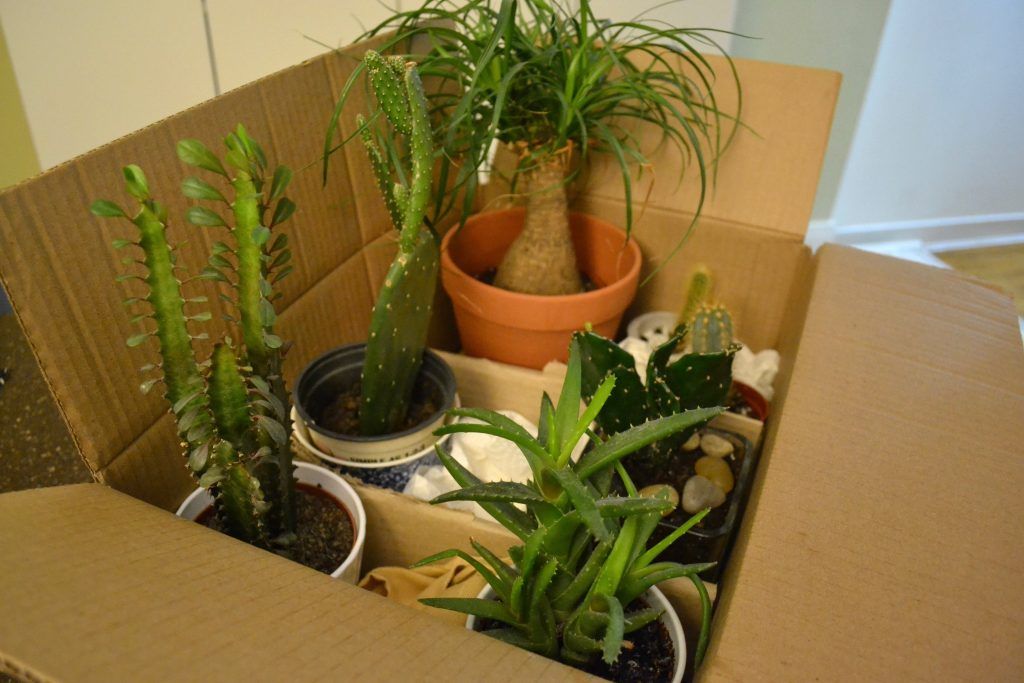Moving to a new home is an exciting and challenging experience, especially when you have a collection of beloved plants to consider. Transporting your green companions requires careful planning and preparation to ensure their safe journey and continued well-being. In this blog post, we will provide you with valuable tips and advice on how to successfully move with your plants, from prepping them for transport to caring for them in their new environment. Let’s dive in!
Assess and Prepare
Before moving day, take an inventory of your plants and evaluate their transportation needs. Consider the size, weight, and fragility of each plant to determine the appropriate packing materials. Research the specific requirements of your plants, as some may be more sensitive to changes in temperature, light, or humidity.
Prune and Repot
Trimming your plants before the move will reduce their size and make them easier to transport. Prune away any dead or damaged leaves, branches, or flowers. For larger plants, consider repotting them into lightweight, unbreakable containers to minimize the risk of damage during transit.
Plan the Transport
If you’re moving locally and have a small collection of plants, transporting them in your personal vehicle is often the best option. Ensure that the plants are securely placed in the vehicle, so they don’t topple over or get damaged during the journey. For long-distance moves or larger plant collections, hiring professional movers experienced in transporting plants might be a wise choice. Communicate your requirements and concerns to them in advance.
Packing and Protection
To safeguard your plants during transportation, follow these steps:
- Place small potted plants in sturdy, sealed boxes, ensuring they fit snugly to prevent movement. Fill any empty spaces with packing paper or bubble wrap to minimize shifting.
- For taller plants, secure them by tying the branches gently with soft twine or using stakes to provide stability. Protect delicate foliage by covering them with plastic bags or lightly wrapping them in breathable cloth or newspaper.
- If you’re moving during colder months, use insulated materials, such as blankets or towels, to shield your plants from freezing temperatures. Conversely, during hot weather, avoid exposing them to excessive heat, as it can cause dehydration and stress.
Transporting Strategies
Consider the following guidelines while transporting your plants:
- Avoid placing plants in the trunk of your vehicle, as it can become too hot or cold. Instead, seat them in the backseat where they can receive proper ventilation and climate control.
- If using a moving truck, ensure that plants are positioned safely to prevent shifting or damage. Place them away from heavy objects that might crush them, and secure them in an upright position.
- Avoid placing plants near windows where they may be exposed to direct sunlight, which can cause overheating.
Settling into the New Home
Once you arrive at your new abode, it’s time to acclimate your plants to their new environment:
- Unpack the plants promptly and remove any protective coverings.
- Inspect the plants for any signs of stress or damage caused during the move. Remove any yellowing or damaged leaves, as they can drain resources from the plant.
- Find suitable locations for each plant based on their light requirements. Observe how they respond to the new surroundings and make adjustments as necessary.
- Gradually reintroduce watering routines and be mindful not to overwater or underwater your plants during this adjustment period.
- Give your plants time to recover from the move before considering any repotting or fertilization.
FAQs
Can I legally transport plants across state lines or internationally?
It’s essential to check the regulations and restrictions regarding plant transportation for each state or country you’re moving to. Some plants may be prohibited due to potential invasive species or pest concerns. Contact the appropriate agricultural department or plant quarantine agency to obtain the necessary permits and guidelines.
How far in advance should I start preparing my plants for the move?
It’s advisable to begin preparations for moving your plants a few weeks before the actual moving date. This will give you enough time to assess their needs, trim and repot if necessary, and ensure they are in good health before transportation.
Can I ship my plants instead of moving them myself?
Shipping plants can be an option, especially for long-distance moves. However, keep in mind that it can be a more expensive and complex process. Research reputable plant shipping companies that specialize in transporting live plants and inquire about their packaging requirements and delivery schedules.
What if I have large, heavy plants that are difficult to move?
Large and heavy plants can be challenging to move on your own. Consider hiring professional movers who have experience handling and transporting such plants. They will have the necessary equipment and expertise to ensure safe and secure transportation.
How can I prevent my plants from getting damaged during the move?
Proper packing and protection are crucial to prevent damage to your plants during transportation. Use sturdy boxes, padding materials like packing paper or bubble wrap, and secure them to minimize movement. Additionally, avoiding extreme temperature conditions and providing adequate ventilation during transit will help protect your plants.
What should I do if my plants experience shock or stress after the move?
It’s not uncommon for plants to experience some degree of shock or stress after being moved to a new environment. Give them time to adjust by maintaining their usual care routine, providing appropriate lighting and temperature conditions, and monitoring their health closely. Remove any damaged or unhealthy parts and be patient as they acclimate to their new surroundings.
Can I repot my plants immediately after moving?
It’s generally recommended to allow your plants some time to settle and recover from the move before considering repotting. Moving is already a stressful event for plants, and repotting them immediately can add additional stress. Wait until your plants have adapted to their new environment and are showing signs of healthy growth before repotting, if necessary.
Final Words
Moving with plants requires careful planning, preparation, and attention to their specific needs. By following the tips outlined in this blog post, you can ensure a smooth and safe transition for your green companions. Remember to assess, prepare, pack, transport, and acclimate your plants in their new home, allowing them time to adjust and thrive once again. Happy moving and happy gardening!


